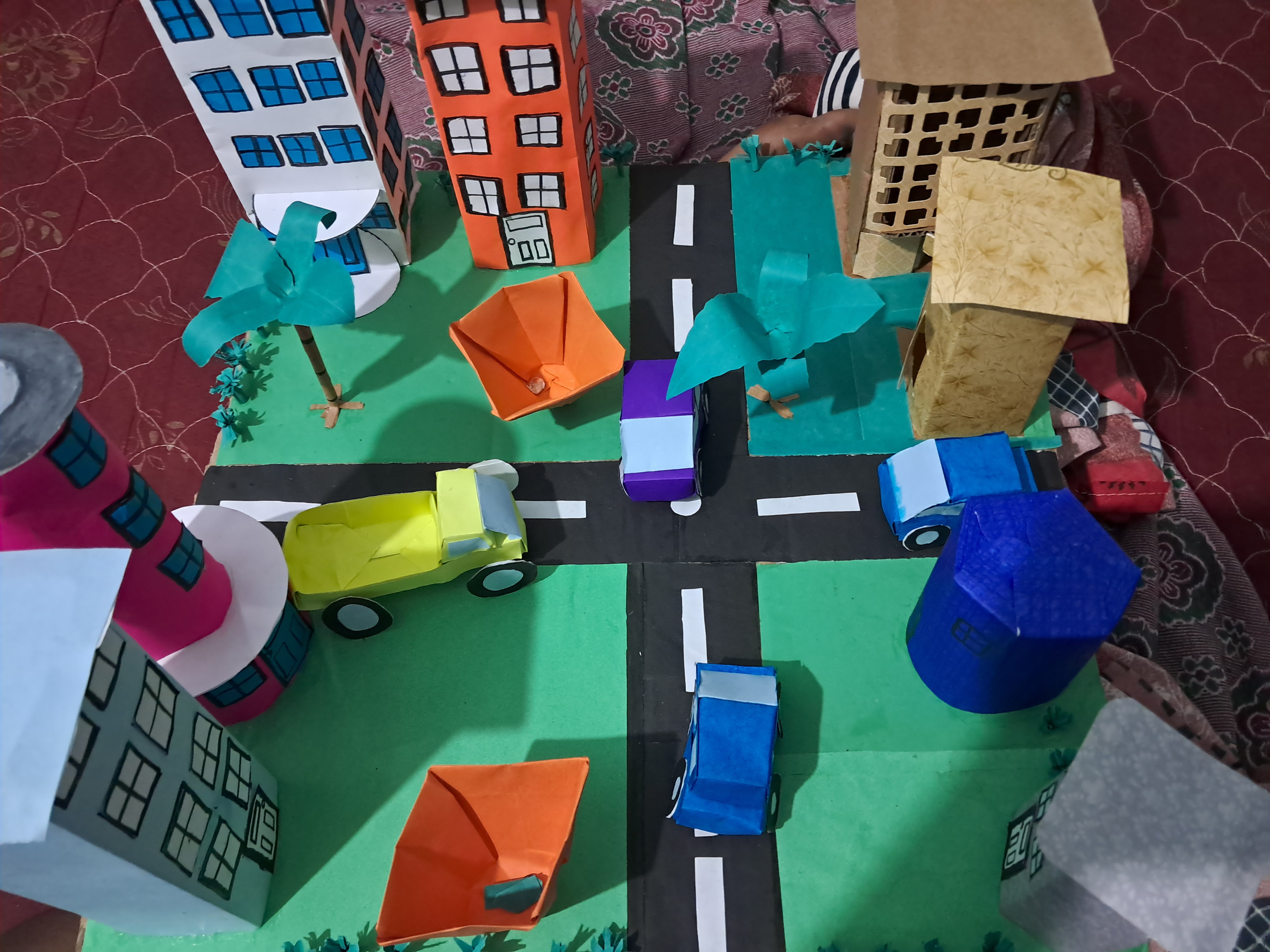Composting Project
Theme: Climate Action and Responsible Consumption
Group Name: Eco Innovators
Group Members: Bastizo (Leader), Jeffin Dani, Rakshit
Project Image

Overview of the Project
This project focuses on an efficient composting system that processes green waste into valuable compost while capturing biogas as a renewable energy source. The composting container has a mixing mechanism powered by a servo motor and a gas collection setup. A soil container aids in maintaining balanced moisture and nutrient levels, enhancing the compost quality.
Why We Chose This Theme
We selected the theme of climate action and responsible consumption because it aligns with global efforts to reduce waste and promote sustainability. By composting, we aim to minimize landfill waste and reduce greenhouse gas emissions, contributing to a cleaner and healthier planet.
Materials and Components
- Plastic Container (Main Composting Bin): This large, durable plastic container serves as the primary chamber for composting. It is where the organic waste is stored and broken down by microbes. The container is designed to be airtight to control the environment inside, preventing unwanted odors and keeping pests out. The material is lightweight yet sturdy, ensuring that it can handle the composting process without deteriorating.
- Internal Soil and Microbe Starter: Soil is added to provide natural microbes that facilitate the breakdown of organic matter. It also helps regulate moisture levels, which is essential for maintaining the right conditions for decomposition. The microbes in the soil are responsible for breaking down the organic waste and converting it into compost. Adding soil also helps control odors and speeds up the composting process.
- Servo Motor (Mixing Mechanism): The servo motor is used to automate the mixing of the compost, which is essential to maintain aerobic conditions (oxygen-rich environment) inside the bin. By rotating a mixing arm, the motor evenly distributes moisture, microbes, and heat within the composting material. This prevents clumping and ensures efficient decomposition. The motor can be programmed to operate at intervals, providing a regular mixing action that enhances the compost quality.
- Small Container for Soil Storage: This separate container inside the main composting bin holds a mixture of soil. This small container can be used to store extra soil or lime that may be added at intervals to maintain pH balance and control moisture. Having a dedicated space for these materials ensures they are readily available for mixing when needed, without interrupting the composting process.
- Solenoid Valve (Gas Release Mechanism): The solenoid valve is a crucial component for managing the release of biogas produced during composting. As organic waste decomposes, it generates methane and carbon dioxide. The solenoid valve is connected to the gas outlet of the composting chamber, allowing gas to escape at controlled intervals to prevent pressure buildup. This component helps ensure safety and also makes it possible to capture biogas for alternative uses if desired.
- Gas Collection Pipe: A pipe connected to the solenoid valve that channels the biogas to a storage container or releases it safely. This pipe is typically airtight and flexible, allowing the gas to flow easily without leaks. It directs the gas away from the composting bin, ensuring a safe environment and preventing gas from building up inside the container.
- Additional Valve (Medical-Grade Flow Control): This valve, similar to those used in medical devices, is used to control the flow of biogas. It offers precise adjustments to the gas flow, ensuring that only a safe, small amount of gas is released at a time. This feature enhances safety and ensures that the system can be managed without the risk of overpressure.
- Jumper Wires and Electronic Connections: These wires are essential for connecting the servo motor, solenoid valve, and other electronic components to a power source and controller. They carry signals and power between components, enabling the automation of mixing and gas release. Jumper wires are durable and flexible, allowing for easy adjustments and troubleshooting without damaging the connections.
- Control Circuit or Microcontroller: A microcontroller or simple control circuit is used to automate the composting system. It can be programmed to manage the timing of the servo motor and solenoid valve, providing efficient and consistent operation. The microcontroller acts as the "brain" of the project, ensuring that each component works in sync according to the set schedule.
- Power Supply: A battery or power adapter is used to power the electronic components, including the servo motor and solenoid valve. It provides a reliable energy source that keeps the composting process automated without constant human intervention. The power supply is chosen based on the voltage and current requirements of the components to ensure stable and safe operation.
Project Overview
Our composting project is designed to handle organic waste efficiently. The setup includes a rectangular container with a small inner container for soil and a controlled environment for decomposition. A solenoid valve safely manages gas release, while a servo motor operates a mixing arm to enhance composting speed and quality.
Future Projections
According to recent studies, the need for sustainable waste management will continue to grow. By 2050, the demand for composting solutions is expected to increase by over 30%, making this project highly relevant in tackling climate issues. Composting can reduce methane emissions by converting waste into valuable soil nutrients, supporting a circular economy.
Summary
This composting project serves as a practical, eco-friendly solution for waste management. It reduces waste, recycles nutrients, and generates biogas, promoting a sustainable approach to resource consumption. By implementing this project, we aim to contribute positively to environmental conservation efforts.
Bio Data
Group Leader: Bastizo
School: NCA
Project Purpose: To demonstrate a hands-on approach to climate action through composting and waste management.